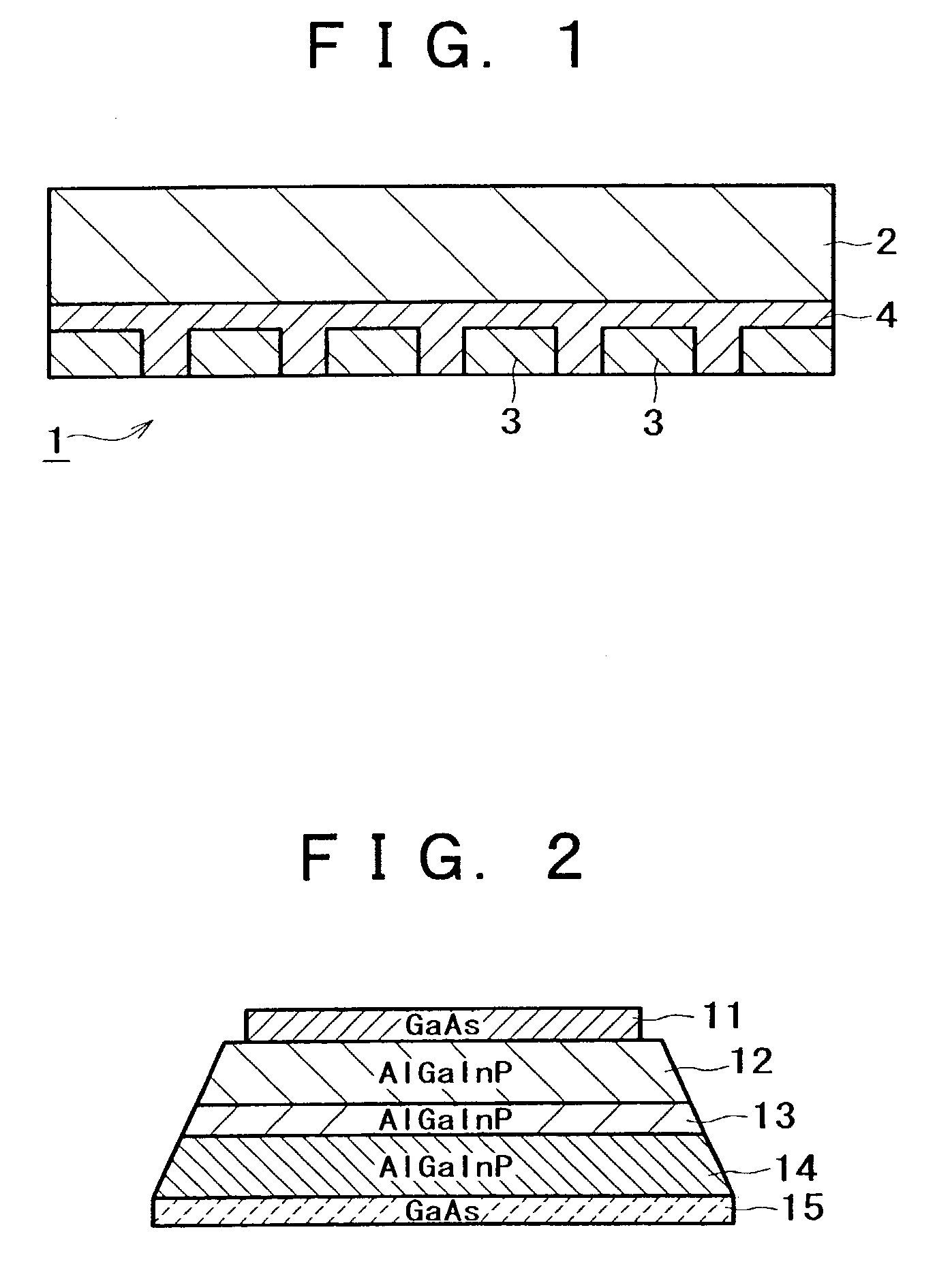Isolating method and transferring method for semiconductor devices
a transfer method and semiconductor technology, applied in the direction of semiconductor devices, basic electric elements, electrical appliances, etc., can solve the problems of difficult removal, difficult to obtain a clean and uniform surface, prolonged exposure period of led devices b>108/b> to etching solution, etc., to achieve high selective etching, uniform and good quality, uniform characteristics
- Summary
- Abstract
- Description
- Claims
- Application Information
AI Technical Summary
Benefits of technology
Problems solved by technology
Method used
Image
Examples
Embodiment Construction
[0047]Now, the method of isolating semiconductor devices and the method of transferring semiconductor devices according to the present invention will be described in detail below, referring to the drawings. In the drawings, for ease of understanding, contraction scales different from the actual contraction scale may be used. The invention is not limited to the following description, and modifications can be appropriately made within the scope of not departing from the gist of the present invention.
[0048]FIG. 1 is a sectional view showing a micro LED array produced by application of the present invention. The micro LED array 1 (hereinafter referred to simply as LED array 1) has a structure in which micro LED devices 3 (hereinafter referred to simply as LED devices 3) having undergone device isolation are adhered to a transfer substrate 2 by an adhesive layer 4 constituted of an adhesive. Here, each of the LED devices 3 has a structure in which, as shown in FIG. 2, a p-type contact la...
PUM
 Login to View More
Login to View More Abstract
Description
Claims
Application Information
 Login to View More
Login to View More - R&D
- Intellectual Property
- Life Sciences
- Materials
- Tech Scout
- Unparalleled Data Quality
- Higher Quality Content
- 60% Fewer Hallucinations
Browse by: Latest US Patents, China's latest patents, Technical Efficacy Thesaurus, Application Domain, Technology Topic, Popular Technical Reports.
© 2025 PatSnap. All rights reserved.Legal|Privacy policy|Modern Slavery Act Transparency Statement|Sitemap|About US| Contact US: help@patsnap.com



